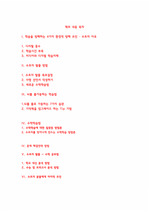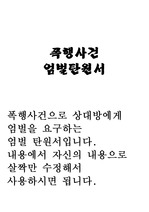IS THE ARTIFICATION PROCESS PERCEIVED BY FINAL CONSUMERS OF LUXURY PRODUCTS? RESULTS FROM AN EXPERIMENT BASED ON THE APPLICATION OF THE CUSTOMER-BASED BRAND EQUITY MODEL
* 본 문서는 배포용으로 복사 및 편집이 불가합니다.
서지정보
ㆍ발행기관 : 글로벌지식마케팅경영학회(GFMC)
ㆍ수록지정보 : GFMC Session1
ㆍ저자명 : Elena Cedrola, Geneviève Cohen-Cheminet, Stefania Masé
ㆍ저자명 : Elena Cedrola, Geneviève Cohen-Cheminet, Stefania Masé
영어 초록
Recent research has shown that many companies in the fashion industry are increasingly weaving close relationships with the art world, to appropriate art values and meanings to be associated with their own products and brands (Hagdtvedt & Patrick, 2008a; 2008b). Businesses related to the fashion luxury sector have been especially prone to using such strategies to transform their products into true artworks to address the issue of commodification resulting from high production volumes (Dion and Arnoult, 2011; Riot, Chameret & Rigaud, 2013). Over the past two decades, the luxury market has undergone huge structural changes through mergers and acquisitions that have transformed an industry made up of small, family businesses into major financial conglomerates and brand owners (Roux & Floch, 1996; Crane 2012). Secondly, globalization and openness to new fast-growing markets such as Asia, have led these luxury conglomerates to increase sales volumes, failing in one of the basic characteristics of such goods: rarity. But if the real rarity of luxury products is a promise that companies can no longer guarantee their own consumers, the elitism of these products can be ensured through an artificial rarity. Jean-Noël Kapferer used the neologism artification recently introduced by French sociologists Nathalie Heinich and Roberta Shapiro and applied it to the analysis of luxury goods (Kapferer, 2012; 2014; Heinich and Shapiro, 2012; Shapiro and Heinich, 2012). He stressed that a strategy based on art implemented by luxury companies is useful mainly to support the perception of rarity by the final consumer. Artification is based on the notion that art –related objects or persons are associated with positive values. Enhancing a corporate image in the consumer’s mind means building positive ties to the brand that will initiate a form of benevolence towards the brand, providing the legitimization of corporate actions and, in some cases, resulting in the purchase of goods and services produced and distributed by the company (Keller, 1993; Aaker, 1996; Aaker & Joachimsthaler, 2000; Keller, 2003). We decided to analyse the effect of Artification on brand value by focusing on the four dimensions of Awareness, Image, Quality and Loyalty by using the same CbBE ( Customer-based Brand Equity) structure previous authors tested on country of origin effect on consumers, based on the main hypotheses further explained (Pappu, Quester & Cooksey, 2006). The first hypothesis relates to the dimension of Awareness and aims to test the level of brand recognition in final consumers when the logo is modified by an artist. • H1 – Consumers’ awareness remains strong when the brand is ‘artified’. We analyze then the Image, as the second dimension of CbBE. Due to the complexity of this dimension, we posited two hypotheses connected to it: • H2a – Consumers’ free associations to the brand are connected to the artworld when the brand is ‘artified’ (e.g. consumers indicate words as art, contemporary art or the name of the artist). • H2b – Consumers’ evaluation of the brand image points to stronger positive associations when the brand is ‘artified’ The last two hypotheses we mention are connected to the dimensions of Quality and Loyalty: • H3 – Consumers’ evaluation of Quality increases when the brand is ‘artified’. H4 – Consumers’ Loyalty to the brand increases when the brand is ‘artified’. • The analysis was conducted through a between-subjects randomized experiment and manipulated art presence (with art versus without art). Starting from the same panel, two groups were created: one including the treatment (visual arts) and one including no treatment at all. Furthermore, we limited ourselves in this experiment to images of products and pattern created by Louis Vuitton that are actually on the market, associating them randomly to the research units in order to obtain two statistically consistent groups subjected to the different treatment (with art or without art)4. The two groups were labelled ‘artified’ group and control group, the first grouping the respondents to the questionnaire containing images of Louis Vuitton Logo, pattern and product modified by art collaboration with Yayoi Kusama; and the second grouping the respondents to the questionnaire containing images of Louis Vuitton Logo, pattern and product in its standard design. The questionnaire was distributed between the months of May and June 2015 via Qualtrics survey software. It was divided into four distinct blocks: the first concerned the presentation of the survey, the declaration of authorization signed by the participants and the demographic information; the second and the third blocks of questions were identical, with the same series of questions but based on different images used. There were 880 respondents, 825 of whom correctly filled the questionnaire we submitted to them. The control group was made of 413 respondents, 73.13 % of whom were female and 26.87 % male. The ‘artified’ group was made of 71.60 % female and 28.40 % male. We analyzed the four dimensions of Awareness, Image, Quality and Loyalty individually and in a comparative manner between the control and ‘artified’ groups. In the CbBE model, dimensions are analyzed individually since Awareness and brand Image measures are not comparable because they are collected through different measure methods, respectively through multiple choice and open-ended questions. Such dimensions as Image, Quality and Loyalty which were raised through Likert scales were then subjected to mono multivariate statistical analysis. The main results are shown in table 1. By reading the results for CbBE, Hypothesis H1 [Consumers’ awareness remain strong when the brand is ‘artified’] has been confirmed. The aided brand awareness shows no important differences between the two groups, so visual artists may modify logos or the appearance of luxury products without the fear of compromising brand awareness in the final consumers. Hypothesis H2a [Consumers’ free associations to the brand are connected to the arts when the brand is ‘artified’ (e.g. the word art, contemporary art or the name of the artist)] was not confirmed. Hypothesis H2b was partially confirmed as Generic Associations and Brand Personality were impacted by the use of the visual arts, while Organizational Associations were not. Brand loyalty and Perceived Quality were not impacted by the Visual Arts either, so Hypothesis H3 and H4 were not confirmed. As a main result for CbBE analysis, the Visual Arts have an impact on Customer-based Brand Equity, limited to Brand Image dimensions. The fact that Brand Image is one of the most complex dimensions of brand value opens the way to the development of future analysis and research in the visual arts as external source for brand equity, especially for Brand Personality. The main results of our research show that an artification effect is visible especially at the level of brand image and brand personality, two complex and valuable components of Brand Value from a consumer perspective. This opens to further in-depth analysis of these two components for future research. Large luxury groups (such as Cartier and Prada) have long used an art-based strategy to increase the value of their products, avoiding the risk of a loss of prestige perceived by the final consumer who would no longer recognize the exclusivity of a product that seems to be increasingly more industrial than handmade. Art can therefore contribute to alter and rework the image and market position of a specific brand or an entire product line, ensuring the transition from an ordinary image to a prestigious one, or strengthening the existing prestigious perception (Hetsroni & Tukachinsky, 2005; Lee et Al., 2015). We believe that a strategy based on art implemented by luxury companies is beneficial mainly to support the perception of rarity by the final consumer. Luxury goods would have to be unique or at least not produced in too high volumes precisely because of their craftsmanship and the care with which they are made. Rarity is not compatible with the increase in sales volumes required by the financial holdings that own the same luxury brands (Roux and Lipovetsky, 2003; Kapferer, 2012; 2014; 2015). The artification process we researched would have exactly the dual purpose of improving the brand image of companies that apply it, while increasing the perception of luxury in end consumers. What is more, we believe that the luxury brands from the industry sector that belong to large financial conglomerates now have the strength to simultaneously apply all the components in the artification process, by sustaining activities of sponsorship, philanthropy or generic collaboration with artists. The fact that luxury products are an integral part of the world of visual arts combined with the fact luxury brands have now the strong support base of large financial conglomerates can ensure the right economic and cultural support needed for the application of such a strategy. In the case of fashion companies, we believe artification is a process in itinere. In our experiment free associations to the brand show that only 2 consumers out of 880 remembered or knew the name of the artist (Yayoi Kusama) and 10 people indicated the substantive ‘art’ or ‘contemporary arts’ as free associations in the ‘artified group’ (only 2 in the control group). This shows that luxury brands ‘art-based strategy cannot only concentrate on temporary collaborations with artists. Luxury brands as Louis Vuitton must act as art institutions able to display arts collections to the widest public and bestow art status and global recognition to collaborating artists (Masè and Cedrola, 2017). This strategy relies on LV ability to raise consumers’ awareness of the arts. While the art-oriented public recognizes artistic collaborations, the larger public does not yet is still very much aware of new designs. Novelty is equally perceived by both, but is partially decoded by one category of consumers.참고 자료
없음"GFMC Session1"의 다른 논문
 FAST AND SLOW FASHION BRANDS IN DEVELOPING SUSTAINABLE ..6페이지
FAST AND SLOW FASHION BRANDS IN DEVELOPING SUSTAINABLE ..6페이지 “WHAT IF A CELEBRITY AND A BRAND CO-CREATE A NEW COLLEC..7페이지
“WHAT IF A CELEBRITY AND A BRAND CO-CREATE A NEW COLLEC..7페이지 THE INSTAGRAM’S STRATEGY IN ENGAGING THE CUSTOMER’S LOY..3페이지
THE INSTAGRAM’S STRATEGY IN ENGAGING THE CUSTOMER’S LOY..3페이지 THE PARTICULARITIES OF NEW PRODUCT DEVELOPMENT IN THE T..5페이지
THE PARTICULARITIES OF NEW PRODUCT DEVELOPMENT IN THE T..5페이지 THE LONE CHOCOLATE BAR: THE INFLUENCE OF PERCEIVED SCAR..6페이지
THE LONE CHOCOLATE BAR: THE INFLUENCE OF PERCEIVED SCAR..6페이지 ADS AS WORKS OF ART: MEASURING ADVERTISING IMMERSION3페이지
ADS AS WORKS OF ART: MEASURING ADVERTISING IMMERSION3페이지 ECONOMIES OF SMALL: NICHE STRATEGIES AND SUCCESS FACTOR..8페이지
ECONOMIES OF SMALL: NICHE STRATEGIES AND SUCCESS FACTOR..8페이지 THE INFLUENCE OF ONLINE CUSTOMER REVIEWS ON RETAILERS' ..6페이지
THE INFLUENCE OF ONLINE CUSTOMER REVIEWS ON RETAILERS' ..6페이지 THE ODD EVEN PRICE PARADOX IN THE FASHION LUXURY SECTOR6페이지
THE ODD EVEN PRICE PARADOX IN THE FASHION LUXURY SECTOR6페이지 CONCEPTUALISING BEAUTY IN CONSUMER RESEARCH: A FRAMEWOR..8페이지
CONCEPTUALISING BEAUTY IN CONSUMER RESEARCH: A FRAMEWOR..8페이지

























